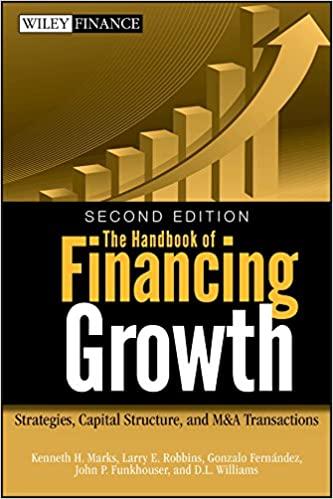Answered step by step
Verified Expert Solution
Question
1 Approved Answer
what would be the answer if part a was as follows: Home Price - $ 5 2 9 , 0 0 0 [ 1 ]
what would be the answer if part a was as follows:
Home Price$
Minimum down payment required by the loan provider.
Down payment amount$
Loan amount$
Closing cost$
Loan interest rate compounded monthly
Length of loan term years
Property taxes$ per year
Homeowners Insurance$ per year
Mortgage InsuranceDown payment of
The home considered for this case study is a home listed in Bay South at a price of $ This is a reasonably priced home with three bedrooms and three baths and is an excellent example of a home for a firsttime homeowner The minimum down payment of this home was estimated as a percentage. On average, the normal down payment of a home is twenty percent of the purchase price in Newfoundland; therefore, this was the down payment percentage used Calculation of the down payment amount was done by simply multiplying the down payment percentage by the home price giving a value of $ The loan amount for this home is and was calculated by subtracting the down payment amount from the home price
The next step was to find the closing cost of the purchase of the home. Research shows that the closing costs of a home in Newfoundland is approximately two percent of the loan amount This gave the closing costs of $ In Newfoundland for the year a year fixed interest rate of compounded monthly with an amortization period of years is common Therefore this was the rate and term used for this case study. For a rural community such as that of Conception Bay South, property taxes per year are approximately of the home purchase price Therefore the cost of property tax for this home can be found by multiplying the purchase price by making a yearly property tax payment of $ An approximation of homeowners insurance in Newfoundland is $ per year If a homeowner makes a down payment of at least of the home purchase price, they do not need to pay mortgage insurance therefore in this case mortgage insurance will not be considered NEED A SOURCE FOR THIS
On the date of purchase of the home, the homeowner needs to make a payment. The amount of money needed on day of purchase MDP can be found by adding the down payment amount and the closing costs. In this instance this returned a MDP value of $ to be payed on the purchase day. Another important cost associated with purchasing a home is the monthly payment MP This MP is a sum of the monthly Property tax, monthly homeowners insurance, and monthly loan payment. Monthly property tax and homeowners insurance was found by dividing the yearly rates by returning payments of $ and $ respectively. The monthly loan payment was found by multiplying the loan amount by the capital recovery factor AP i N Finding the monthly interest rate to be and number of payments to be the Monthly loan payment was found to be $ Summing these monthly payments together gave a MP of $ to own this home.
Considering the above question and answer, what would be the answer to the following part B
the question and template for the answer is below. Take the above part a as reference and use it to answer part B:
Part b Deciding to buy or rent
Your task is to Determine if it would be economically better for you to buy a home or rent an apartment.
Content:
Imagine you have decided to stay at the university six more years to do a masters degree and then a PhDDont worry this is fictitious; and besides, on the happy side, we will also imagine you can afford to buy a house The question is whether it would be economically better to buy a home and sell it in six years or is it better to just rent an apartment. To work out this problem you will need to make a few assumptionsYou may
choose to include other items, such as utilities, parking fees, association fees, etc. You might even want to think of a dollar value to put on a few nonmonetary costs and benefits see question below
Use Future Worth Analysis to compare the two alternatives.
Choose your MARR. Assume your MARR is adjusted for inflation.
Show your estimates for all the items in Table In your report, include sources and assumptions.
Also, answer these questions:
Based only on future worth analysis, which alternative should you choose?
How do you think the calculated FW would change if you only lived there for yrs What about
yrs
Your annual house payment is probably more than your annual rent; so when we conduct an
economic analysis like this, what are we assuming about your extra money each month if you rent?
What are some of the risks involved with each alternative?
Please find:
Down payment and buying closing costs,House payments,Routine repair and maintenance,Tax Break, Equity, appreciation, selling costs, deposit, rent, and annual percentage increase change in annual rent?
Step by Step Solution
There are 3 Steps involved in it
Step: 1

Get Instant Access to Expert-Tailored Solutions
See step-by-step solutions with expert insights and AI powered tools for academic success
Step: 2

Step: 3

Ace Your Homework with AI
Get the answers you need in no time with our AI-driven, step-by-step assistance
Get Started


